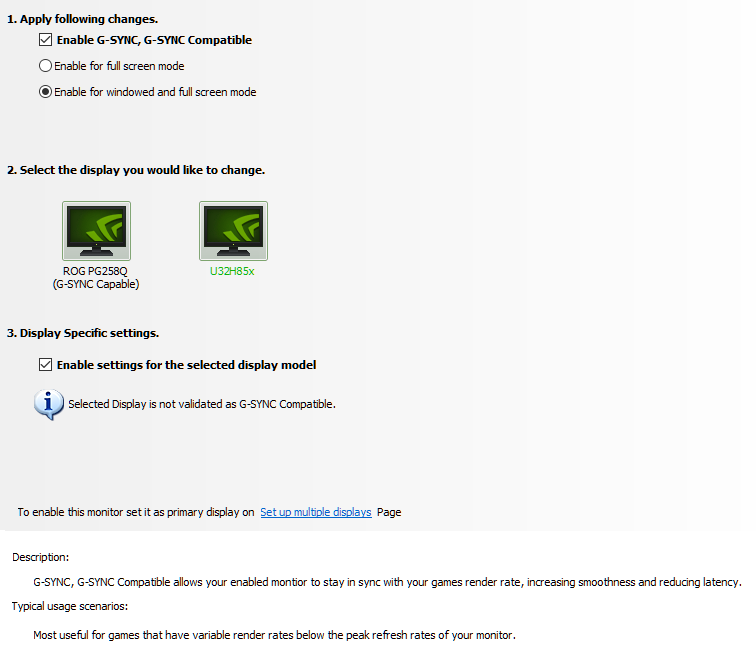Updated Jan 17, 2019 By Adam Babcock
G-SYNC Compatibility Test
Using FreeSync Monitors with an NVIDIA Graphics Card
Since 2013, there have been two competing Variable Refresh Rate technologies: FreeSync, developed by AMD, and G-SYNC, developed by NVIDIA. Since the two technologies are not interchangeable, up until now, it has been important to choose a monitor that uses the same technology as your graphics card. This changed on January 15th, 2019, when NVIDIA released version 417.71 of their driver that enables FreeSync on NVIDIA G-Sync graphics cards.
This update enables FreeSync support on any 10- and 20- series NVIDIA graphics card, but only over DisplayPort. While developing the new driver, NVIDIA tested over 400 different FreeSync displays, and identified
12 monitors that meet their implementation standard.
The new driver allows you to enable FreeSync with
any FreeSync display, even if it isn't officially supported. According to NVIDIA, the unsupported monitors displayed a range of FreeSync issues, ranging from minor tearing and blur, to screen blanking or motion duplications. But, also according to NVIDIA themselves, the monitors displayed these issues on AMD and NVIDIA graphics cards. Another issue is in NVIDIA's requirements, as they require FreeSync to be enabled by default on G-SYNC Compatible monitors; since most monitors require you to enable FreeSync in the monitor's OSD, they are automatically disqualified, even if there were no issues.
Note that this driver technically implements the VESA Adaptive Sync standard, not FreeSync. FreeSync is the proprietary AMD implemenation of the VESA Adaptive Sync Standard. Since both use the same standard, this allows NVIDIA cards to work with FreeSync monitors. In this article, we use FreeSync instead of Adaptive Sync for simplicity sake.
Test results

